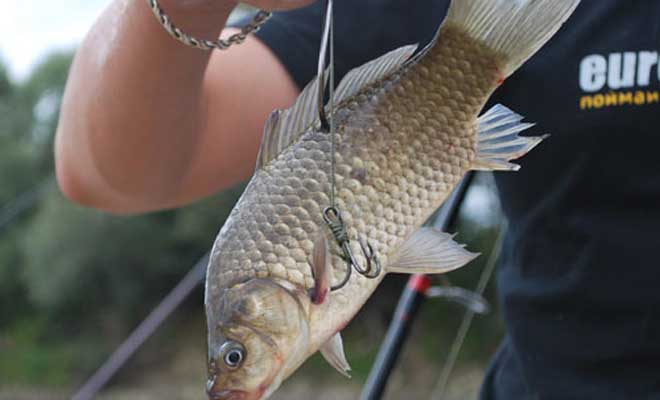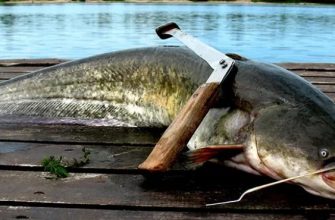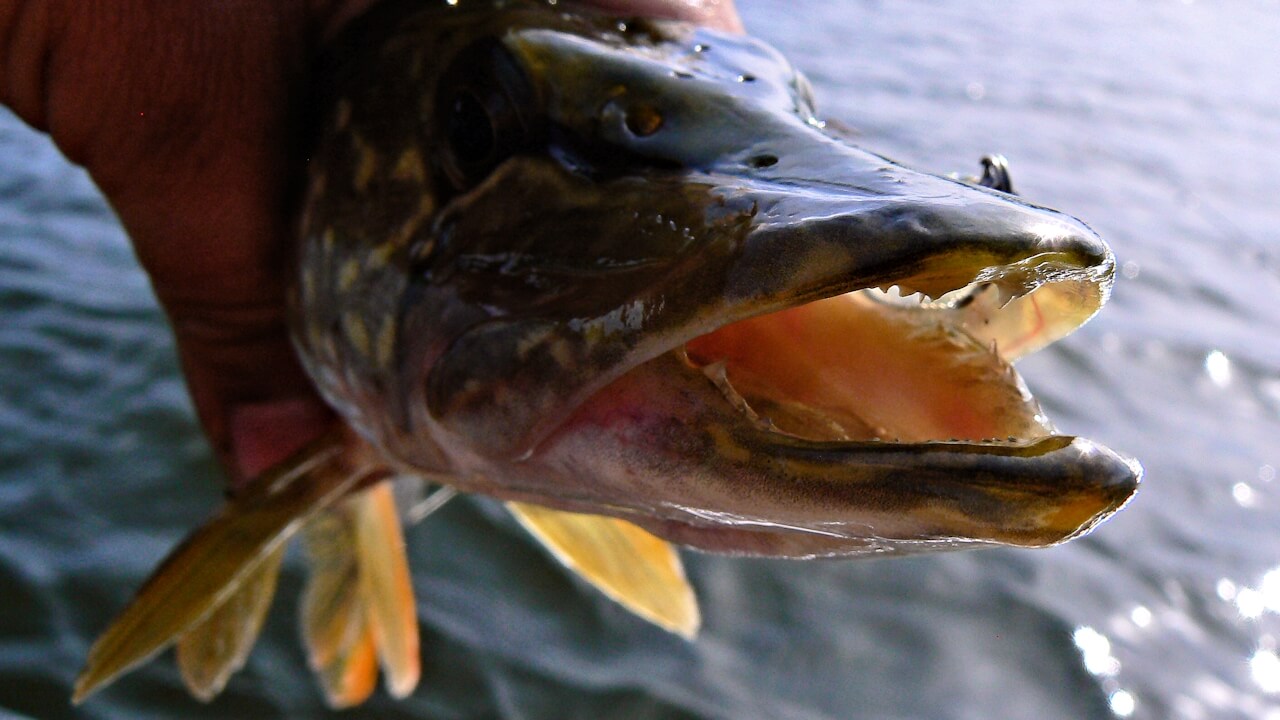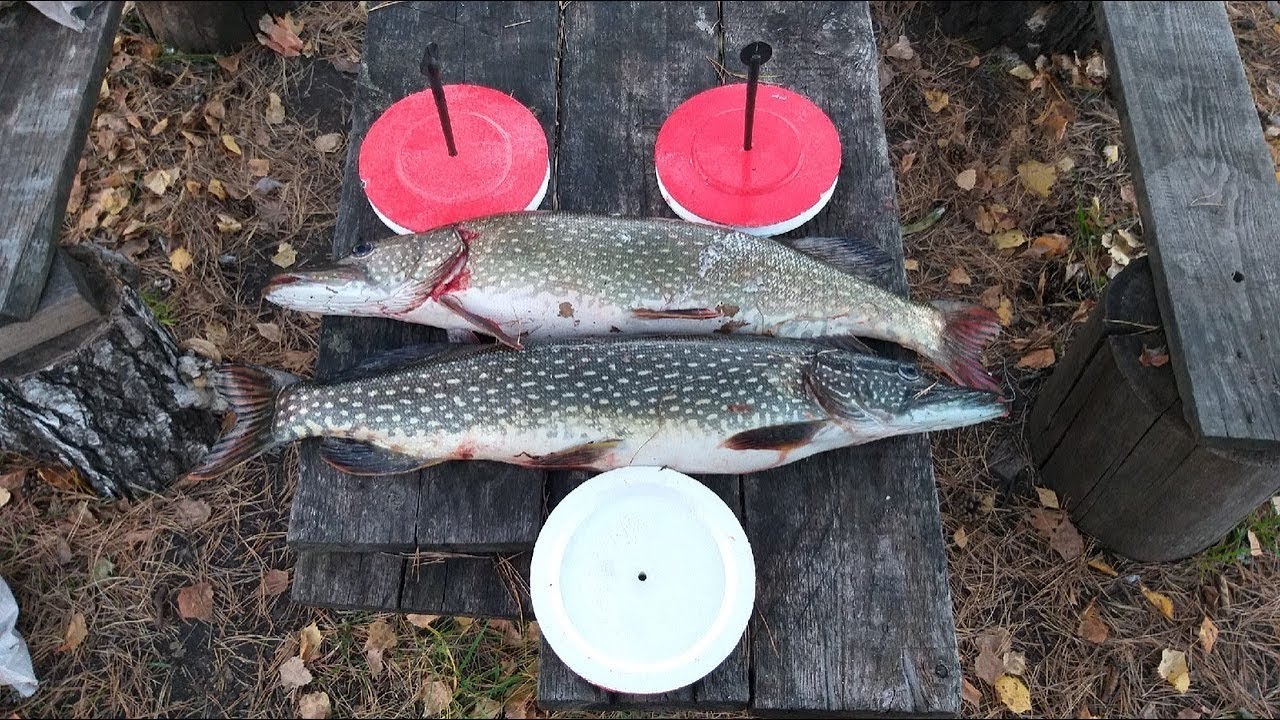How to put a live bait on a hook, double, tee for catching pike, perch, zander. Many anglers are passionate about catching predatory fish. Most of them prefer
spinning fishing . But there are also many who catch a predator on natural baits, in other words, on live bait.
- What is a live bait and why is it important to properly mount it when fishing on live bait rigs
- The main ways to plant live bait
- single hook
- We put the live bait on a double hook
- triple hook
- offset hook
- Several hooks for bait bait – tackle
- Baiting a live bait for catching different types of fish
- pike fishing
- Catching a catfish
- Perch fishing with live bait
- zander fishing
- burbot fishing
- Chub and ide fishing
- Asp fishing
- Live bait fishing in current and still water
- Planting live bait on winter fishing
- Planting live bait on mugs, line, bait, donka, live bait float
- Selection of live bait for different types of fishing
- Helpful Hints
- Поделиться ссылкой:
What is a live bait and why is it important to properly mount it when fishing on live bait rigs
Live bait is usually called a small live fish, mounted on a hook, which a predatory fish perceives as prey, and grabs it, falling on the hook. Live bait less than 40 mm long are called fry. They are also successfully used for catching predatory fish, but they are hooked a little differently.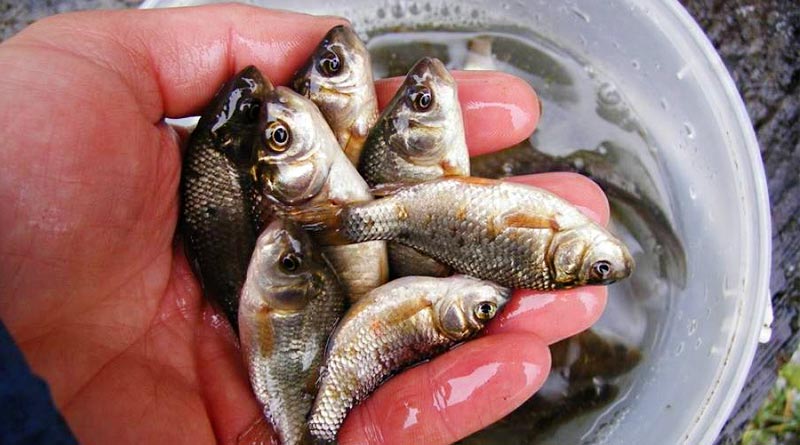
The latter condition is not always necessary – some predators do not care if the bait is alive or dead.
The main ways to plant live bait
There are several ways to plant live bait. They are determined by the following conditions:
- a kind of predatory fish that should peck at the live bait;
- the type of fish used as live bait and its size;
- place of fishing: on clean water, in grass, in snags, in current or without it;
- tackle used for live bait fishing;
- whether a leash is used.
All these factors determine which hook to use for bait bait.
single hook
On a single hook, live bait is planted mainly in two ways. When fishing on
float gear , on the
bottom and on the bait, the live bait is most often planted behind the back. The sting of the hook pierces the body of the fish either under the dorsal fin or closer to the tail. For the lip (or for both lips), sometimes they say, “for the nostril” the live bait is hooked when a power cast is required – on the same float tackle and on the bottom, as well as when fishing in the current. In addition, a single hook is used if the live bait is too small.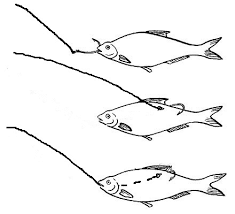
We put the live bait on a double hook
Doubles stick into the body of the live bait in the same way as singles – in the back under the fin (possibly closer to the head or tail) or in the lip. However, it is with doubles that you can plant a live bait so that it remains intact. This is especially true when fishing with a leash at the end of which there is a loop. This end is inserted under the gill cover of the live bait so that the loop sticks out of the mouth and a double is put on it.
Important! When catching pike, the use of leashes is a must. But the leash should give the live bait a certain freedom. Therefore, either a soft leader material is used, or a two-piece leader made of a hard material such as a guitar string.
On sale you can find special doubles for fishing on vents. Due to the fact that the free hook is longer than the one inserted into the body of the live bait, the fish is hooked more reliably.
triple hook
There are several ways to put a live bait on a triple hook. Traditionally, the fish is planted behind the back. By the lip is much less common – the extra two hooks sticking out of the mouth of the live bait fish can alert the predator. It is somewhat more difficult to put on a tee without damaging the live bait than on a double. If the live bait is small, and the triple hook has a long shank, you can put the hook under the gill cover, and then fasten the ear protruding from the mouth of the fish with a clasp. Or, just as in the case of a double, slip the leash under the gill, but due to the fact that there must be a clasp at its end, the operation becomes more difficult.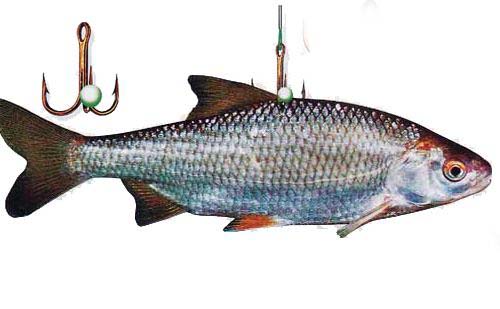
offset hook
The use of an offset hook for live bait fishing is not justified. Offset does not provide any advantages.
Several hooks for bait bait – tackle
Quite often, large live bait is used to catch large fish, for example, pike or catfish. In order for the prey to be caught with a guarantee, it requires the use of a rig of two or three hooks. They are mounted differently. The easiest option is to stick one tee into the lip of the live bait, and the second – sliding on a leash or main line – into the back. Interesting fact! There are special bottom rigs in which the sinker lies on the bottom, and the live bait floats above it. In this case, it is planted behind the stomach closer to the head or tail. In this matter, it is important not only what method of planting the live bait will be optimal, but also the choice of fish used as live bait. The following types of fish are used as live bait for pike fishing: Attention! Crucian carp is considered a universal live bait for pike. He is extremely tenacious and pecks at him even in those reservoirs where he is not found. Pike are caught on live bait both in open water and from ice. Anglers ask how to put live bait on a bait in winter. If tees are used, then they are planted behind the back, if doubles, then through the gill. If the live bait is large, then put on two hooks. In the summer, pike is caught on live bait in different ways: on a float, on a bottom, on vents, on mugs. When fishing on float tackle, you can even stick such a delicate fish as bleak. If a power cast is not required, it is better to hook the live bait to the back, otherwise the fish will fall off the hook when casting, so it is better to put it on the lip. The same applies to bottom line fishing. Live bait is planted on vents and circles in the way that best suits the conditions of fishing, the size of the bait and the intended prey. [caption id=”attachment_8652″ align=”aligncenter” width=” To catch catfish, you will need fairly large specimens of the following types of fish: The eyesight of the catfish is not very good, so you should not be shy with the size of the hooks. Two or three tees are stuck into the live bait. For catching a river giant, powerful bottom gear is usually used. [caption id="attachment_12721" align="aligncenter" width="605"]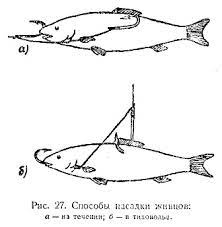
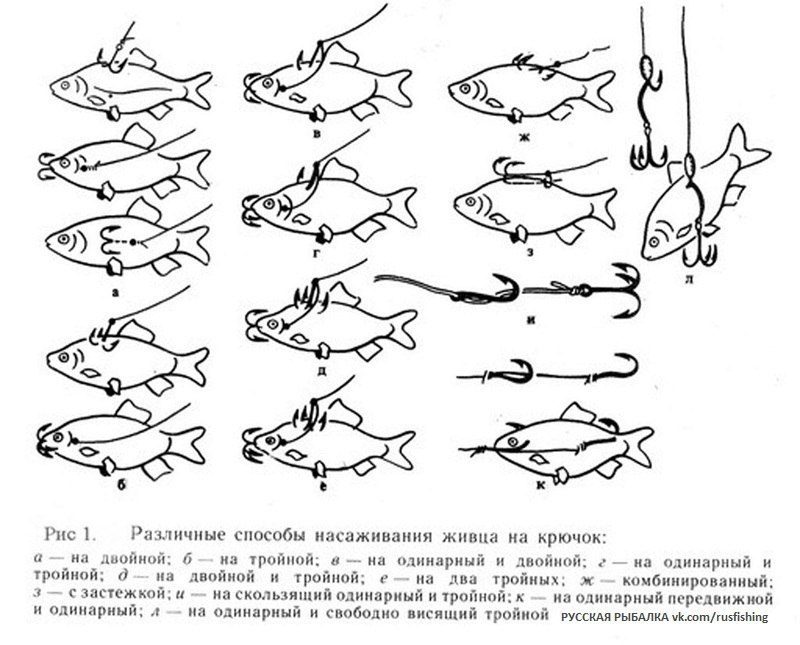
Baiting a live bait for catching different types of fish
pike fishing
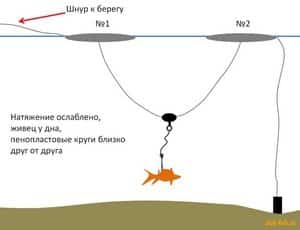
Catching a catfish

Perch fishing with live bait
The perch bites better on small-sized live bait fish with a relatively narrow body, such as bleak, dace, roach, top, ruff and its own younger relatives. The most effective fishing on a float rod. You can purposefully catch a large perch on vents and mugs. It is better to put the live bait on a single hook.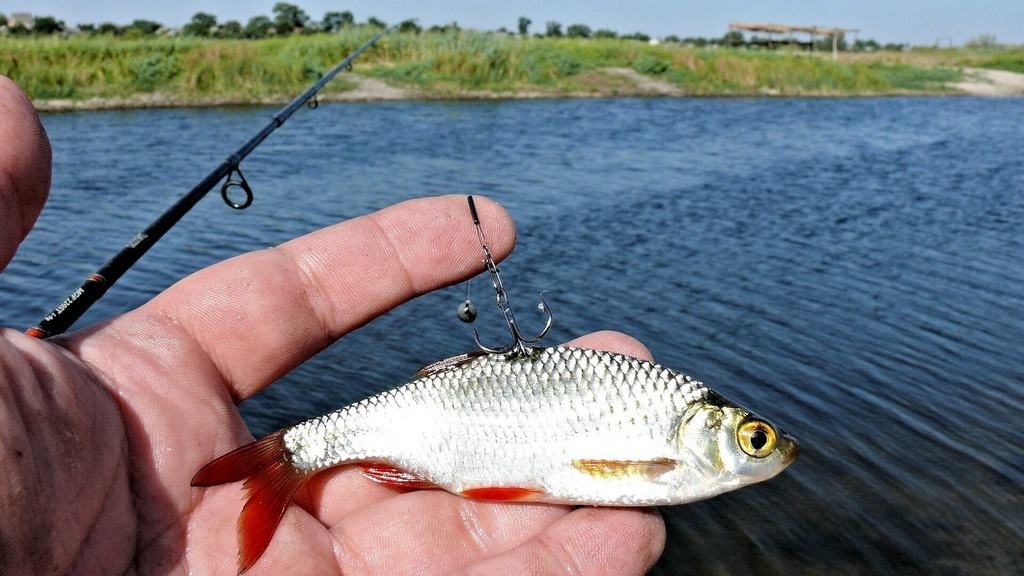
zander fishing
Bait baits for zander fishing are the same as for perch fishing, i.е. fish with a slender body. Most anglers fish for zander on bottoms using bleak or top bait as these fish can be caught in large numbers with a lift. As a rule, single hooks are used. From the ice, a fanged predator can be hunted with vents, although fishing with artificial lures or with the same bleak or sprat (on the Volga) mounted on a jig head can be considered more effective.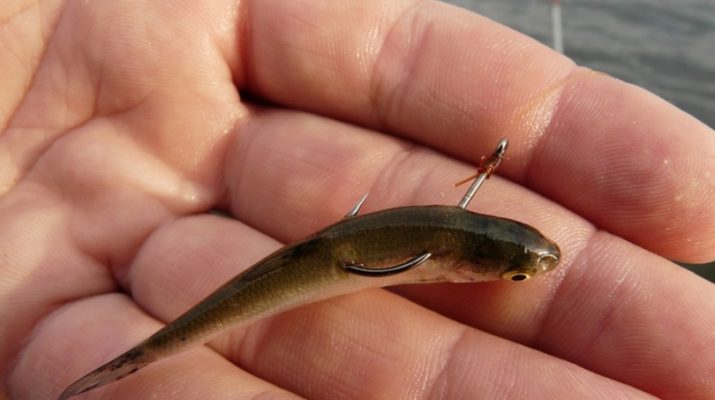
burbot fishing
This predator prefers live bait such as ruff, roach and gudgeon, and it is not at all necessary that the fish be alive. They catch burbot in open water on bottoms, and in winter on them and on vents. They put live bait or other bait on large single hooks.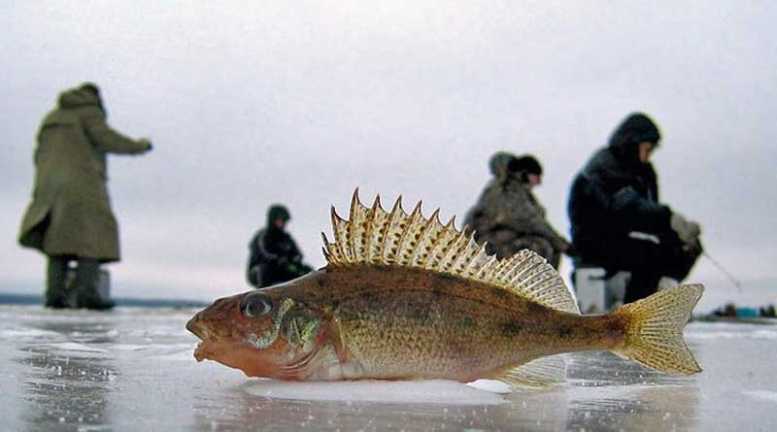
Chub and ide fishing
It is better to purposefully catch these semi-predatory fish with a float rod with a small live bait on a single hook, although they are often caught on bottoms when catching perch and zander.
Asp fishing
The main food of asp is bleak, so it is best to use it as a live bait. You can catch this swift predator by sticking a bleak on a single hook of a float tackle and floating the rig downstream. How to put on (put) a live bait on a hook: https://youtu.be/SxcD5ZiX4L8
Live bait fishing in current and still water
When fishing on the current, the live bait must be in the water in a natural position. This can be achieved by hooking it to the lip. Then he will imitate a weakened fish struggling with the current. If you put a live bait on a double through the gill, it will look like a fish running downstream. Therefore, these two methods can be considered optimal. Although if the predator is unpretentious, like burbot, and often pike perch, then you can cling to the back of the live bait. In flowing reservoirs, live bait is caught on a float rod, on a donk and on vents, which, with the help of an additional outlet, are anchored.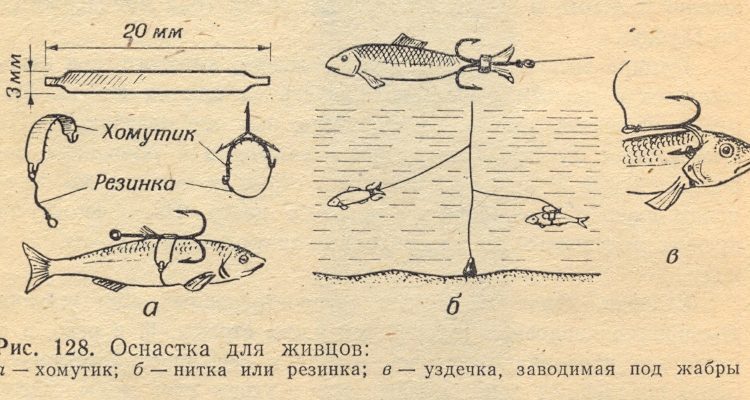
Planting live bait on winter fishing
The main prey of anglers practicing live bait fishing in winter are pike and burbot. A toothy predator is caught on zherlitsy. Some anglers prefer to hook the live bait with a tee behind the back, others thread the leash through the gills and attach a double.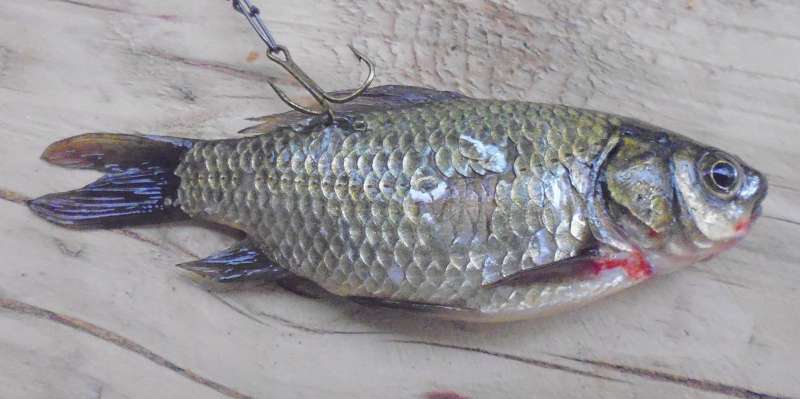
Planting live bait on mugs, line, bait, donka, live bait float
The installation of live bait on mugs and baits is approximately the same and depends on what kind of fish is caught and what kind of bait is used. When fishing on a float rig, the same pattern applies in the same way as on a donk.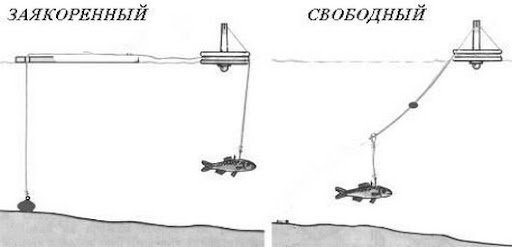
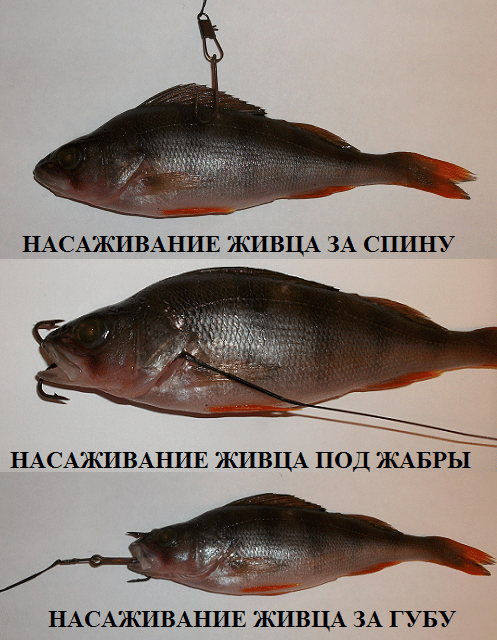
Selection of live bait for different types of fishing
When choosing live bait for fishing, the angler should be guided by the following rules:
- Fish used as live bait must be presented in the water where the fishing takes place. It is desirable that they be caught in it. The exception is carp, on which the pike bites almost everywhere;
- Live bait must be alive and moving . When catching burbot, this is not necessary;
- Live bait must be the correct size . It is known that pike may not covet too small live bait, while pike perch and perch will ignore too large prey;
- Baiting should be carried out in a way that corresponds to the chosen method of fishing .
Helpful Hints
Anglers who are starting to catch a predator on live bait, you can give the following advice:
- when fishing in a snag, it is better to plant a live bait by the lip. The free movement of the girders should be minimal;
- When catching catfish, using leashes is just as important as when hunting for pike. The giant with its brushes on the jaws grinds any fishing line or cord;
- when catching pike on the vents, it is necessary to have a yawn and tweezers (kartsang) to extract the hook;
- when fishing with live bait, it is better to use hooks made of thick wire, as they hold the fish better.
How to properly equip a vent and how to properly put a live bait on a tee, double and single – video instruction: https://youtu.be/R-y5rFxYLro It is known that many predatory fish have periods when they practically do not react to artificial baits. Then live bait fishing comes to the rescue. Although it delivers more trouble, the result can exceed all expectations.
